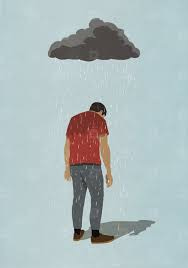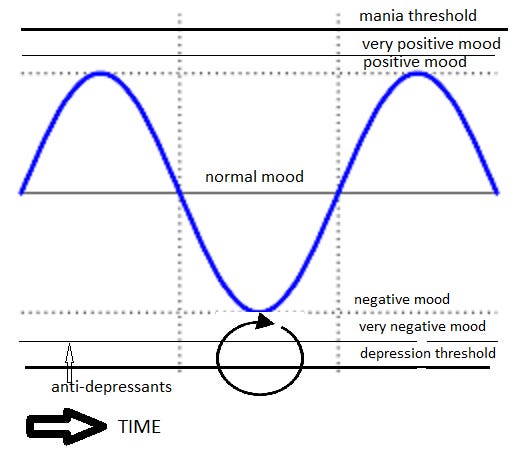“Dr., I’ll never get out of this depression.”
“I can’t remember what it was like to feel normal.”
“I feel like I’m covered with a cold, wet blanket that is sucking any positive feelings I have out of me.”
“No one knows what I’m going through.”
These are all statements from people that indicate a feeling that an everyday mood is lost. There is a lore that once you experience depression, you will never be normal again.
As a therapist, I am keen to know why a person is depressed. Regardless of how you acquire a depressed state, the process takes on a predictable pattern. Below is a figure that combines the emotional lability idea and a depressive episode.
This figure has three parts:
1. Mood and thresholds. (normal, positive, negative mood and mania versus depression thresholds).
2. Time. Time means your moods change with time.
3. Sign Wave. This is the ups and downs of moods in all people over time.
4. Circle arrow. This is depression. The circle means that things go down, reach a low point, then go back up to where they started. Depression is circular. When you go down, you pass the “depression threshold,” and time gets distorted. In the circle, the arrow starts to angle backwards as you hit bottom. When people are depressed, they say time slows down and even stops.
5. Anti-depressants. Anti-depressants are medicines. Medicines don’t change the course of depression; they raise your threshold or tolerance for negative emotional pain. When you take depression medication, you feel emotionally flat or dull. This is because the drug is increasing in dosage and creating tolerance, or masking the depressive pain.
In my next post, I will describe cases where the turbulence model helps to understand and treat depression.



